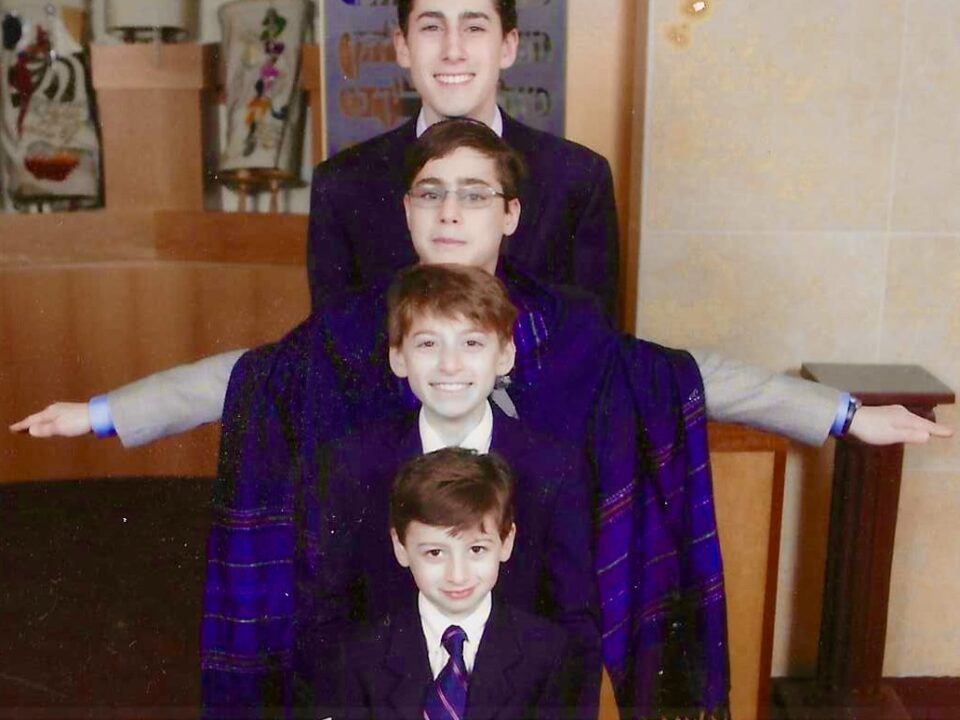
Thriving in High School & Beyond
March 4, 2025
What’s the Big I.D.E.A.?
March 25, 2025Beyond Butterflies: Understanding Childhood Anxiety
By Carol S. Siege, PCC
Founder, Family Pathways Coaching, LLC
When my youngest son was in preschool, he was the boldest kid on the playground. He lost recess privileges because he wouldn’t abide by the school’s safety rules (Who says he’s not allowed to climb to the top of the jungle gym… and maybe jump off?). He happily ran to greet kids on the street he recognized from the baseball diamond or the soccer field, and he was never intimidated by the big kids on the bus.
But something changed when he was in grade school.
A host of challenges crept up, intersected, and ultimately led to severe anxiety that caused him to stop eating. After many long months of tracking every morsel he put in his mouth and coddling, cajoling, and coercing him to eat something -- anything – we finally made the connection between his refusal to eat and anxiety. Finally, he was able to articulate that the idea of putting something in his mouth when he felt overwhelmed was unbearable. Then, when physical hunger pangs inevitably caused nausea, he was even less inclined to eat, and the downward spiral ensued.
Approximately 10 percent of U.S. children aged 3-17 struggle with a diagnosed anxiety disorder, according to the Centers for Disease Control and Prevention (CDC), based on data collected from 2021-22. Sleep and appetite disruptions are among the most common symptoms of childhood anxiety, along with social withdrawal, intrusive worries and physical ailments. And avoidance behavior can have long-term harmful effects as children refuse to participate in common social and academic activities, leading to loneliness and an increased risk of depression, according to the American Academy of Child and Adolescent Psychiatry (AACAP).
So, how can you know if your child is simply nervous or shy, or if they may be struggling with an anxiety disorder?
- Intensity and Duration: It is normal for some children to be temporarily nervous before a test or meeting new people. Anxiety, however, will last long after the specific stressor has faded.
- Avoidance: A shy child may just need time to warm up before joining a group. An anxious child will refuse to go to school or interact with others at all. This avoidance worsens over time and reinforces the anxiety.
- Physical Symptoms: It is not uncommon for all children (and some adults!) to feel nervous before an event, perhaps experiencing sweaty palms or “butterflies” in their stomach. Anxiety symptoms can include headaches, dizziness, and nausea when there is no real danger, and these symptoms can affect daily activities and lead to avoidance.
- Thought Patterns: Most, if not all, children sometimes experience worries that are realistic and short-lived. Anxious thoughts are often irrational and catastrophic, assuming the worst will happen in otherwise normal daily activities.

How can parents support their children who are diagnosed with an anxiety disorder and help them overcome the challenges?
- Cognitive Behavioral Therapy (CBT) -- Both the National Institute of Mental Health (NIMH) and Child Mind Institute consider CBT to be the gold standard for childhood anxiety disorder treatment. CBT teaches children to recognize anxious thoughts, challenge them, and replace them with more balanced thinking.
- Exposure, Not Avoidance -- According to research conducted by the Anxiety and Depression Association of America (ADAA), gradual exposure to feared situations helps reduce anxiety over time. Avoidance only makes anxiety worse.
- Relaxation Techniques -- Deep breathing, mindfulness and meditation help anxious children manage physical symptoms, according to studies conducted by the American Academy of Child and Adolescent Psychiatry (AACAP).
- Healthy Lifestyle -- Proper sleep, balanced nutrition and regular exercise all contribute to reduced anxiety, according to the CDC and NIMH.
- Medication -- SSRI’s and other medications can be especially useful when therapy and lifestyle changes are not enough, also according to the CDC and NIMH.
- Parental Support – Parents who model healthy behavior can “play a crucial role in managing childhood anxiety,” according to the Child Mind Institute. Parents can focus on validating a child’s feelings, encouraging problem solving, and modeling calm behavior.
For my son, his journey to success has been long and winding. Through a combination of therapy, medication, support and time (read: maturity), he perseveres and confronts challenges that get in the way of a full and healthy life. While he has not completely overcome his anxiety, he is able to recognize when irrational thoughts are cluttering his mind or when avoidance is interrupting normal activities. And as his parent, I continue to legitimize the hurdles he faces while encouraging him to take continuous steps forward. Sometimes baby steps, sometimes giant leaps -- he’s in the driver’s seat.




